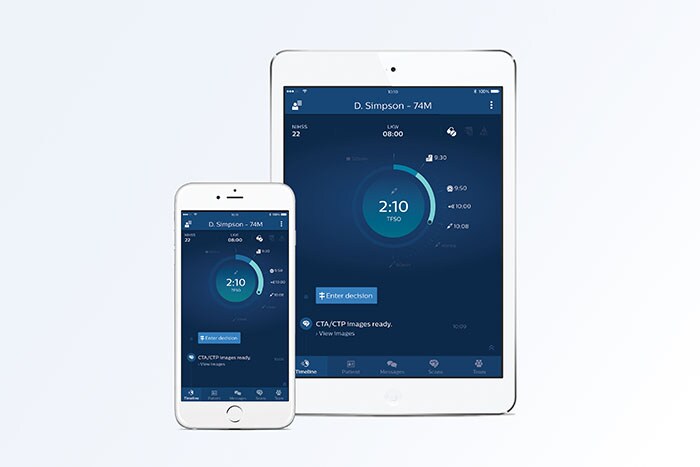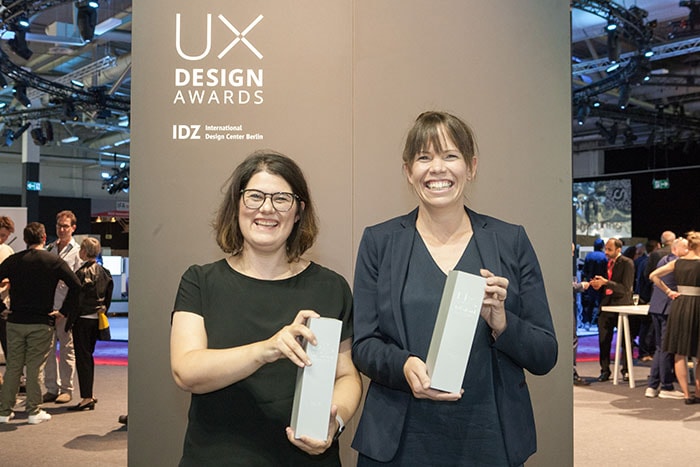Blog
Co-creating a people-centric stroke communication solution
My mother suffered a stroke when she was 50 years old. Luckily, she survived it. While her brain suffered lasting effects from the stroke, she is enjoying a full life now. Regrettably, however, not every stroke victim’s story ends this way. Did you know that stroke claims a life every 6 seconds? 15 million people have a stroke each year. [1] A stroke is the rapidly developing loss of brain function(s) due to a disturbance in the blood supply to the brain. Every minute of time that passes without care, 2 million neurons in the brain die. Every hour, 120 million neurons. [2] This means that the brain ages 3.6 years each hour without treatment. [2] Loss of neurons means loss of brain functionality and possibly death if too much time lapses. Therefore, when someone suffers a stroke, it is absolutely critical to get to the hospital, and ideally to a specialized stroke center, as soon as possible.
Every minute of time that passes without care, 2 million neurons in the brain die. Every hour, 120 million neurons.
Time is brain
Neurologists and other emergency care physicians came up with a saying ‘time is brain’ emphasizing that stroke is a heavy medical emergency. Depending on the stroke type, a stroke victim needs to be treated within 4.5 hours after onset. This means that when a person suffers a stroke, everyone needs to act fast. The first bystanders with the victim need to quickly notify the emergency medical service (EMS). The EMS needs to recognize the stroke and pre-alert the hospital so that the stroke team - consisting of a neurologist, radiologist and other healthcare professionals - can be ready. Once a stroke patient arrives in the hospital, many different processes need to take place: the patient needs to be triaged, have a CT scan, and then a specialized team needs to make a diagnosis before the right treatment can be determined. Usually by the time this process is finished, at least three hours have passed since the stroke onset. 60 million neurons are gone, directly affecting a person’s brain, body functions and chances of a high quality of life in the future. Straightforward, right? Well, no, not exactly... Next to the physical process of moving through different departments, the communication process adds another layer of complexity and delay. For instance, test results and imaging need to be shared among the entire acute care team and across all shifts, where the patient is in the care flow must be known at all times, what care the patient has received so far and what should happen next, is vital. Communicating this information in a timely manner within a large team is simply not efficient in many hospitals, which means the patient isn’t getting the best care possible.
Streamlining this cumbersome communication process is exactly what I’ve been working on for the last year, alongside my research, design and other team members at Philips and our partners at Karolinska University Hospital – the renowned stroke hospital, based in Sweden. Want to hear what we’re developing? Read on.

People centric approach to create a meaningful innovation
We know that hospitals are (rightfully) quite conservative in adopting new technologies because they need 100% certainty that the technology is accurate and reliable at all times and user-friendly —a person’s health or life is on the line. Getting physicians and other medical professionals on board with such changes, asking them to integrate a new tool into their way of working, therefore takes time.
The biggest challenge in creating solutions for better and more effective stroke communications is not developing the technology itself, it is successfully implementing the solution in the user environment.
At the end of the day, I believe that the biggest challenge in creating solutions for better and more effective stroke communications is not developing the technology itself, it is successfully implementing the solution in the user environment. A crucial part of creating meaningful innovation is about identifying needs and translating them into a solution that works for the hospital. I believe this is why our collaboration with the Karolinska University Hospital is so crucial. Listening to the hospital’s expert insights, reflecting on the prototype simulation results and data, and tweaking the design after each simulation, is what has enabled us to develop the prototype for what I believe could be a game-changing people-centric tool. We followed an agile way of working with weekly iterations within a multidisciplinary Philips team and monthly iterations within the Karolinska team. This enabled a rapid development cycle from initial concepts, to a working prototype on customer site in 5 months. We have put people at the heart of the innovation process, both from a clinical and Philips perspective. I’m proud to say that the UX award we earned for it, presented at the most recent IFA conference in Berlin, is in recognition of this great co-creative partnership.
I’m proud to say that the UX award, presented at the most recent IFA conference in Berlin, is in recognition of this great co-creative partnership.

What our co-designed tool could enable is swift and transparent, real-time information sharing among the hospital staff as well as with and among the acute stroke team itself—from the moment a patient enters the hospital or center to when a patient is treated. The tool is designed to provide easy access to all necessary information: for instance test results, imaging, medication overview, where the patient is in the care flow, what steps are next (with reminder notifications), a messaging service for the care team to use with another, and much more. With this tool, the acute care process can be streamlined from door to treatment. There would be no lapses in information transfer from one person on the care team to the next. Everyone could have the right information at the right time, resulting in highly specialized and personalized care for each stroke patient.
Co-creating the future of healthcare
Although we are excited about the solution we developed, our collaborative work on further refining and testing the prototype together with the Karolinska University Hospital is far from over. We will continue our work to keep improving improve stroke care. Communication and care orchestration in the future could be easily expanded to pre hospital system so that symptom recognition, alerting and routing will become much easier and effective. The partnership between Philips and the Karolinska University Hospital allows us to explore this broader ecosystem and invite other initiatives to join forces. In my opinion, designing, co-creating and implementing humanized technology solutions, is simply the only way for effective adoption to occur. And being a part of this way forward, feeling like I have a real impact on people’s lives - it’s inspirational.
‘Time is Brain’. Every second, minute and hour matters to a stroke patient—your mom, your brother or sister, your grandfather—my mother.
On this day, which is also World Stroke Day (October 29th), one thought I’d like to leave readers with is this: ‘Time is Brain’. Every second, minute and hour matters to a stroke patient—your mom, your brother or sister, your grandfather—my mother. Do you know how to recognize the warning signs of a stroke? Use FAST: FACE: Ask the person to smile. Does one side of the face droop? ARMS: Ask the person to raise both arms. Does one arm drift downward? SPEECH: Ask the person to repeat a simple phrase. Is their speech slurred or strange? TIME: If you observe any of these signs, call the emergency number immediately.

Atike Pekel (left), Sr. User Experience Designer Philips Design and Elke Daemen (right), Senior Scientist Philips Research at the at IFA Berlin 2018 Read more about the UX Design Awards and our presentation via: https://ux-design-awards.com/en/product/stroke-communication-tool/
Jury statement on the Stroke Communication Tool
"Work in hospitals and other public institutions is often obstructed by outdated and inconsistent digital infrastructure. The Stroke Communication Tool addresses a critical need in a high-risk area that is characterised by high demand for reliable systematic solutions. The jury recognises the valuable approach that has been taken towards broad knowledge access for team members in situations where collaboration and response time are of critical importance. As a systemic solution that connects to existing healthcare infrastructures, the Stroke Communication Tool has the potential to add true user and patient value in the healthcare sector." References [1] See https://www.world-stroke.org/component/content/article/16-forpatients/84-facts-and-figures-about-stroke (last accessed 23 October 2018). [2] Saver, Jeffrey. L (2016). “Time is Brain—Quantified.” https://pdfs.semanticscholar.org/2b5d/780e95cabc24903109ddf08f5338b8759f19.pdf (last accessed 23 October 2018).

Elke Daemen "When my mother had a stroke, my father called me saying she couldn’t talk anymore or move her arm. It was late in the evening and my father said he would wait until the next day to go to the hospital. I almost screamed through the phone telling them they had to go now. On top of this all, the GP was not certain whether she should go to the hospital or not. In the end, they drove to the hospital themselves. She had not been triaged by an EMS and therefore not put into the ‘fast track’ when she arrived at the hospital. They had to wait until an emergency department nurse triaged them and called the ED physician. He then notified the stroke team, when he suspected a stroke and several hours had already been lost."
Senior Scientist at Philips Research
Elke is an experienced scientist and project manager with a history of working in the hospital and healthcare industry. In her current work, she focuses on developing comprehensive stroke solutions.
